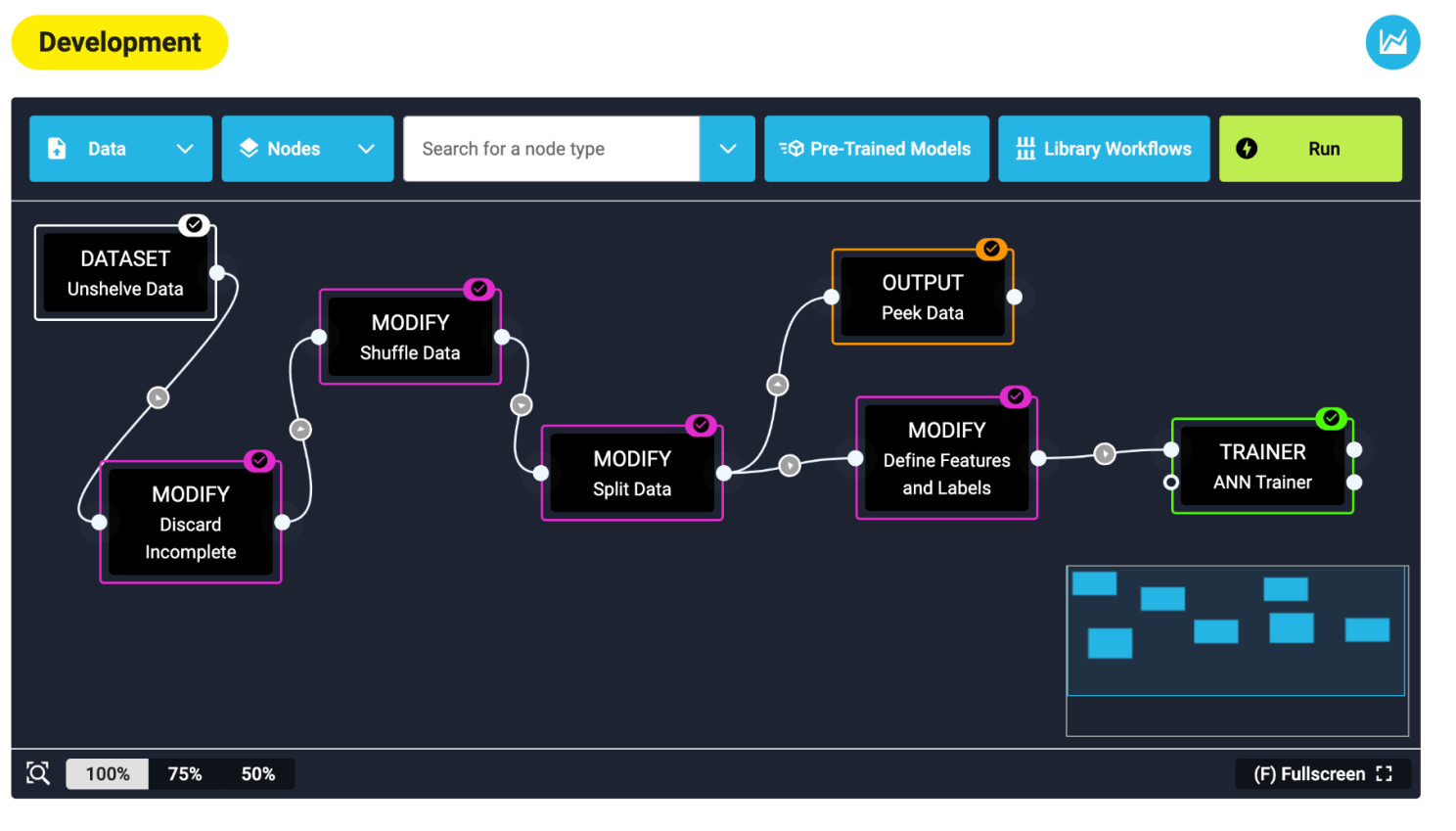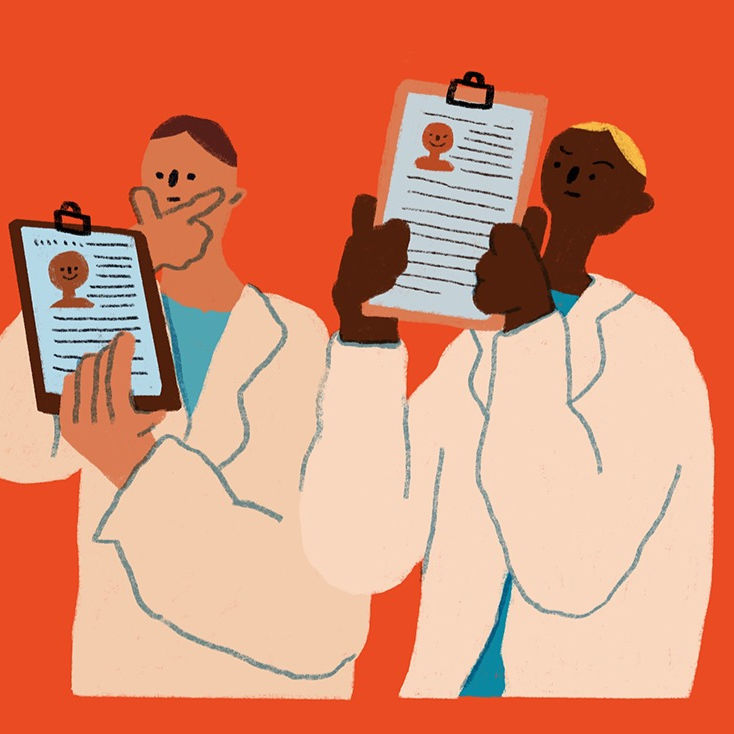Can genomic medicine attract, recruit and retain clinical bioinformaticians?
This article originally appeared on the PHG Foundation Blog.
Fast forward only two decades since the first drafts of the human genome were published, and the formerly niche practice of clinical genomics is being mainstreamed. The new NHS Genomic Medicine Service marks England as the first country to offer clinical Whole Genome Sequencing nationwide and there has never been a more promising time to enter this field.
Focusing on the digital future and genomics, the recent workforce review for the NHS led by Eric Topol , highlighted the need to ‘attract, recruit and retain talented science, mathematics and computing graduates to fulfil leadership roles in computational genomics, data science and public health informatics (collectively ‘bioinformatics’).’
Genomic medicine demands a range of new workforce skills, and the good news is that the NHS is already making progress: as a Trainee Clinical Scientist specialising in bioinformatics, the review was a welcome endorsement of my practice. Like many healthcare professions, clinical bioinformatics is challenged by high demand and short supply. Here I offer my experience as a trainee to shed light on what it means to attract, recruit and retain this tech-savvy workforce.
##On attracting talent When asked why he left Facebook, Data Scientist Jeff Hammerbacher told Bloomberg ‘the best minds of my generation are thinking about how to make people click ads’. While the NHS may not match the salaries of these industries, its unique selling point is meaningful work. Clinical bioinformatics is a relatively recent opportunity for those with specific data skills to enhance patient care. Rare disease, oncology, microbiology and pharmacology are calling out for these skills, and the list is set to expand. My colleagues and I have little reason to question the purpose of our working day.
My exposure to bioinformatics while working in a research lab attracted me to its clinical application. Promotional efforts in this area should be funded and encouraged, such as the online courses produced at the University of Manchester and the Scientist Training Programme delivered by the National School of Healthcare Science. Job descriptions have an important role to play in presenting clinical bioinformatics as an attractive career. Candidates have the opportunity to work at the cutting edge of a diagnostic technology that is shaping the future of medicine. I feel fortunate to be in a discipline where the variety of work feels limitless and every problem solved makes a difference to clinical services. The reality of the job has matched my expectations and experiences like mine should be considered when persuading job seekers to consider careers in clinical bioinformatics
##The gift of time The Topol review highlights the potential for AI and digital medicine to grant clinicians the ‘gift of time’: recruiting and integrating bioinformaticians into clinical services will significantly contribute to making this a reality.
A clinical scientist specialising in genomics applies their wealth of expertise to the discovery and interpretation of DNA variation present in patient samples. These services rely on bespoke software to process and analyse genomic data. Clinical bioinformaticians are primarily responsible for building and maintaining this software. Our secondary responsibility is service development and it is here that new recruits grant clinical services the gift of time.
This part of the role is largely explorative and research driven. Service development may involve validating emerging tools, writing bespoke software solutions, or performing one-off analyses, ensuring that all outcomes are communicated clearly to colleagues. The tools we develop streamline routine tasks, such as presenting analysis results at multidisciplinary meetings or reporting sequence quality deviations to the lab. The value of this development work comes from improving how quickly a lab is able to analyse, validate and report genomic test results.
Genomics services are still developing and experience strain like many other NHS services; in these circumstances, acquiring another clinical bioinformatician may seem like a luxury. In this period of rapid change and service development, the final number of bioinformaticians needed to deliver a comprehensive service isn’t completely clear yet, however our recruitment will be vital to accelerating change.
##Supporting workforce growth and development There is immense satisfaction in working through difficult problems as a clinical bioinformatician, however this is offset by a digital infrastructure has not yet adjusted to the needs of technical users. Recent health policy developments suggest that change is on the horizon. NHSX, the new governmental unit tasked with reforming digital health technology, counts ‘enabling staff to develop digital expertise’ among its responsibilities. This is echoed by both the NHS Long Term Plan and the Topol review which highlight the need for a supportive culture of learning.
Both the NHS and clinical bioinformaticians will benefit from this culture shift. It will be increasingly important for us to keep up with developments in software and sequencing technologies. For example, improving a lab’s diagnostic yield may involve validating novel genome analysis algorithms which make use of complex statistical models and machine learning techniques.
In addition, the Topol Review champions portfolio careers and industry partnerships in the NHS, which is an attractive prospect for clinical bioinformatics, considering that industry-led trends in digital technology are often adopted by the workforce. This could take the shape of more programmes like the Chief Scientific Officer’s Knowledge Transfer Partnership, which have successfully delivered systems of shared learning with industry.
Opportunities for continuous development for all clinical bioinformaticians, not just trainees, will help us to serve the growing needs of services. This will require flexibility in the workforce – and ensuring that services have the support they need to enable this will be crucial.
##Look to the future The NHS of today is embracing a digital future and promises to leverage new technologies for personalised care. There is an opportunity to gather perspectives from those who are developing the skills needed to deliver this digital revolution to further strengthen recruitment and retention of this workforce. The release of the NHS workforce implementation plan later this year marks the beginning of a collective journey to make digital health careers like clinical bioinformatics commonplace in medicine and to embed bioinformaticians in the clinical services of the future.


